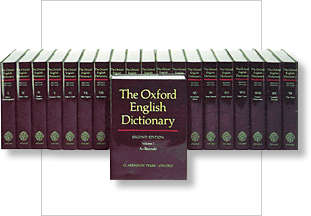
| Instruction > Print Reference Tools |
|
"Books are the treasured wealth of the world and the fit inheritance of generations and nations... Their authors are a natural aristocracy in every society, and more than kings or emperors, exert an influence on mankind." - Henry David Thoreau |
Reference Tools | |||||||
 |
||||||||
 |
 |
 |
 |
|||||
|
In the 21st century academic library, librarians must reacquaint students and faculty with the print reference sources that have served as fact and finding tools for generations of researchers. Features: The Index- The index is an essential part of any reference tool. A good index will include all of the pertinent subjects and their accurate locations. The index serves as a guide through the reference tool. Bibliographies- These form the backbone of any scholarly source. They offer users a way to discover primary and secondary sources related to topics. A well-researched source will contain a comprehensive bibliography of each main subject included. Bibliographic entries increase the usefulness of reference tools. See / See Also References- These references are found most frequently in the Library of Congress Subject Headings and guide users to the best term for a subject. Many bibliographic dictionaries and encyclopedias include these and they direct users to related entries. Searching Techniques: Area Scanning- Browsing materials that are located on the shelf next to sources users already found represents the greatest advantage of a print collection. Users will find related sources that they may not have discovered. This technique takes advantage of library's organizational structure. Footnote Chasing- Following the footnotes included by scholars enables users to expand their topic, obtain related sources, and understand a scholar's method of research. This represents an excellent way to use the standards of scholarly research to one's advantage. Journal Run- Journals contain the latest findings in scholarly research. After locating the most essential journal in a field, users can search a significant span that journal's volumes. With this technique they will find relevant articles and gain a historical perspective on subjects of interest. As most electronic journals are only digitized since the mid-1990s, it is essential to use the bound print versions to accomplish comprehensive research. After mastering these techniques with print sources, users can apply them to electronic searching. |
||||||||